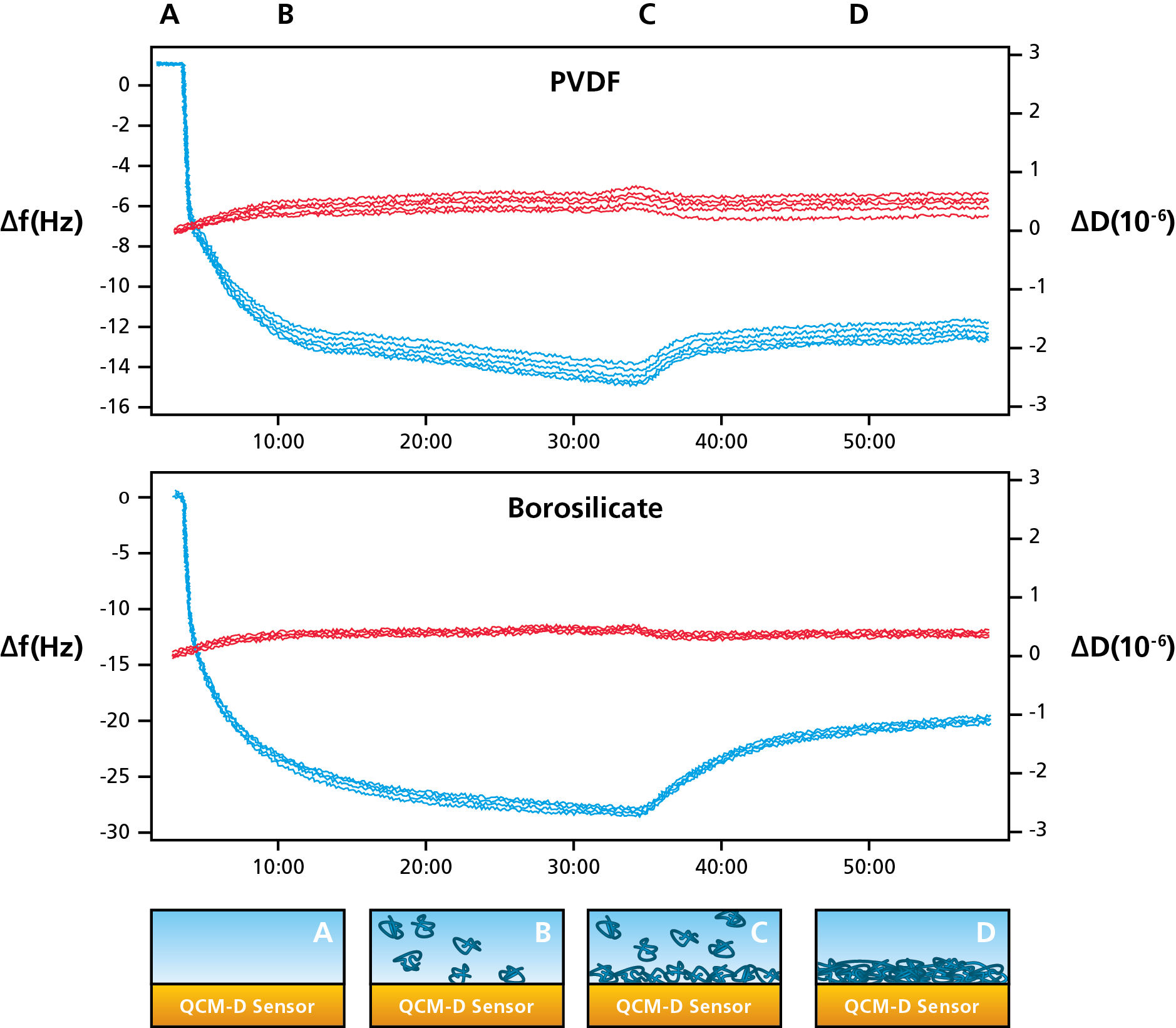
Adsorption and desorption processes occur everywhere. They play an important role in areas such as surface science, biomaterials, cell and molecular biology, and pharmaceutical development and production, where molecules and nanoparticles interact with various surfaces in different contexts.
Adsorption can be defined as the ‘adhesion’ of molecules from a liquid or gas phase onto a surface. Desorption is the reverse phenomenon, when adsorbed molecules are removed from a surface. QCM-D technology, which is essentially a balance for small masses, can monitor molecular adsorption and desorption processes in real-time by detecting the mass changes following the molecular uptake or release from the surface studied.
Depending on the application and objective of the study, it may be relevant to either understand, characterize or optimize the adsorption or desorption events. Either way, it will be relevant to monitor the amount of material that is being added to or leaving the surface, and it may also be relevant to investigate the rate at which the process occurs. Each time material is added to or removed from a surface, there is a corresponding change in mass, which will be detected by QCM-D in real-time.
As an example, let’s have a look at protein adsorption on two different surfaces, one glass surface and one plastic. As outlined in Figure 1, we follow the steps below.

Figure 1. (Top) Protein adsorption on plastic (PVDF) and glass (borosilicate) measured with QCM-D. (Bottom) Schematic illustration of the protein adsorption process.
Monitoring the mass as a function of time, evaluating surface interaction processes is straightforward. It is also possible to compare behavior under different conditions by varying for example the concentration, temperature, pH and ionic strength.
In addition to the example shown here, other types of adsorption and desorption events that could be characterized by measuring the mass uptake and mass loss include, for example, surface interaction of surfactants, polymers and nanoparticles.
Download the overview to read more about what information you can obtain with QSense QCM-D.
Compared to QCM, QCM-D measures an additional parameter, and provides more information about the system under study.
Discover how QCM-D analysis reveals real-time etching dynamics, helping optimize cleaning processes and protect surfaces from unwanted damage.
Discover how QSense QCM-D helps tackle fouling challenges across industries
Discover how QCM-D enables real-time, label-free analysis of supported lipid membrane formation, structure, and dynamics for advanced research
Learn how QSense QCM-D analysis can reveal membrane fouling dynamics and optimize cleaning strategies for more efficient water treatment
Learn how QSense QCM-D helps detect and prevent surface-induced instabilities in biologics. Join our webinar for insights and practical examples.
Learn about the top QSense sensors for analyzing biopharmaceutical drug-surface interactions in the context of IV bags.
Learn about QCM-D, Quartz Crystal Microbalance with Dissipation monitoring - an analytical tool for surface interaction studies at the nanoscale.
Explore QSense QCM-D sensors to optimize cleaning efficiency with real-time insights, enhancing formulations and protocols across various conditions.
Learn how how run small volume measurements with QSense Omni
Learn about of the acoustic technology, QCM-D, via musical instrument analogies.
